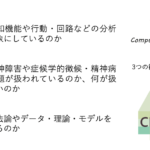(Engineers print wearable sensors directly on skin without heat)
2020/10/9 アメリカ合衆国・ペンシルベニア州立大学(PennState)

・ PennState が、熱を使わずに直接皮膚にプリントできる、シンプルで幅広く適用可能なセンサー製造技術を開発。
・ 同大学では過去にウェアラブルセンサー用のフレキシブルなプリンテッド回路基板を開発しているが、センサーに含まれる金属部品の接合プロセスのため直接皮膚にプリントできなかった。シンタリング(焼結)と呼ばれるこの接合プロセスには、通常約 572℉(300℃)の温度でセンサーの銀ナノ粒子を結合させる必要がある。
・ ナノ粒子の添加で約 212℉(40℃)のより低い温度での銀粒子の焼結が可能だが、皮膚には極めて高温度。そのため、焼結補助層の化学物質の配合とプリント材料を変えることで、室内温度でのシンタリングを可能にした。
・ ポリビニル・アルコールのペースト(美顔マスクの主要原料)と炭酸カルシウム(卵の殻の成分)から構成される焼結補助層により、プリント表面の粗さが低減され、電気機械的な機能を維持しながら曲げたり畳んだりできる金属パターンの極薄膜層の作製が可能に。センサーのプリント後は、冷風ヘアドライヤーのようなエアブロワでインクの溶剤として使用した水を除去できる。
・ 皮膚に直接プリントした同センサーは、温度、湿度、血中酸素レベルや心臓の電気信号を継続して正確に計測する。ワイヤレスネットワークへの接続で計測した信号のモニタリングも実施した。
・ 同センサーは、水中でも数日間機能するが、シャワーのお湯で簡単に除去できる。基板である皮膚やデバイスを傷めることなく除去できるため、皮膚が敏感な高齢者や乳児も使用できる。
・ 今後は、COVID-19 に関連した特定の症状をモニタリングする正確なオンボディーセンサーネットワーク等の、ニーズに応じた特定のアプリケーション用に同センサー技術を改変する予定。
・ 本研究は、PennState、米国立科学財団(NSF)、American Chemical Society Petroleum Research
Fund、Shenzhen Science and Technology Program、Bureau of Industry and Information Technology of
Shenzhen および National Science Foundation of China が支援した。
URL: https://news.psu.edu/story/634601/2020/10/09/research/engineers-print-wearablesensors-directly-skin-without-heat
<NEDO海外技術情報より>
(関連情報)
ACS Applied Materials & Interfaces 掲載論文(アブストラクトのみ:全文は有料)
Wearable Circuits Sintered at Room Temperature Directly on the Skin Surface for Health Monitoring
URL: https://pubs.acs.org/doi/10.1021/acsami.0c11479
Abstract
A soft body area sensor network presents a promising direction in wearable devices to integrate on-body sensors for physiological signal monitoring and flexible printed circuit boards (FPCBs) for signal conditioning/readout and wireless transmission. However, its realization currently relies on various sophisticated fabrication approaches such as lithography or direct printing on a carrier substrate before attaching to the body. Here, we report a universal fabrication scheme to enable printing and room-temperature sintering of the metal nanoparticle on paper/fabric for FPCBs and directly on the human skin for on-body sensors with a novel sintering aid layer. Consisting of polyvinyl alcohol (PVA) paste and nanoadditives in the water, the sintering aid layer reduces the sintering temperature. Together with the significantly decreased surface roughness, it allows for the integration of a submicron-thick conductive pattern with enhanced electromechanical performance. Various on-body sensors integrated with an FPCB to detect health conditions illustrate a system-level example.



